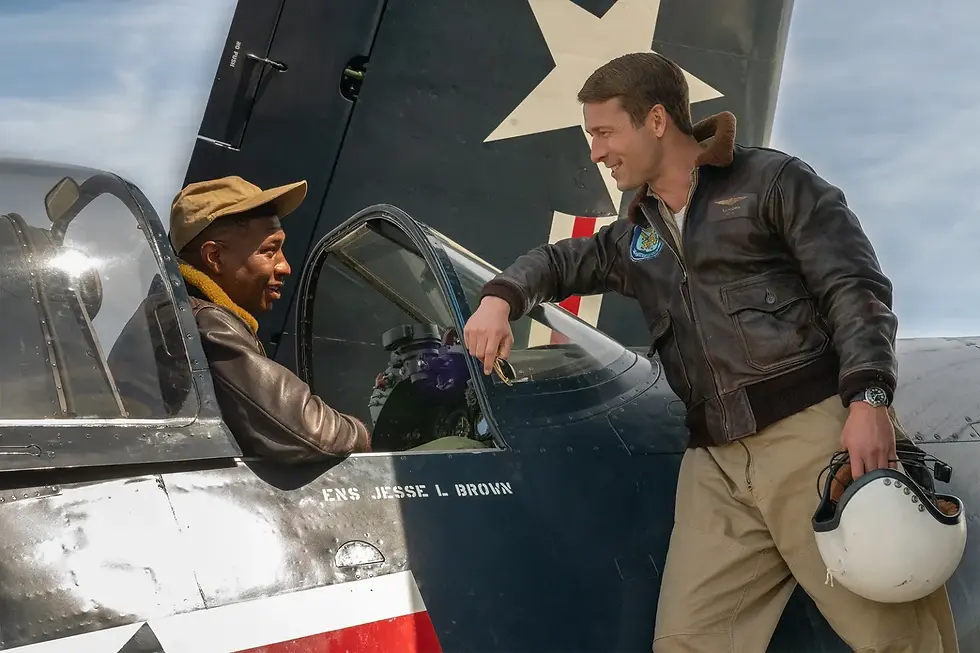How Tom Cruise and Miles Teller pulled off those insane, high-flying stunts in Top Gun: Maverick
- Jordan Orsak

- Aug 5, 2022
- 2 min read

According to the aviation website Aerocorner, in today's money, a Boeing F/A-18 Super Hornet — the fighter jet du jour used by the U.S. Navy since 1995 — costs the American government $67.4 million. That isn't a bulk deal, folks: it's per plane. It should come as no surprise to anyone with a sliver of critical thought, then, that Tom Cruise, Miles Teller and Co. didn't actually pilot the vehicles we see in Top Gun: Maverick.
“But it looks real!” Yeah, it does. That's movie magic, baby.
Nevertheless, Tom Cruise knew from experience on the first Top Gun just how physically taxing the face-melting forces of extreme flight can be: on his debut test run, rocketing up to double the speed of launching astronauts, he hurled inside his oxygen mask. While they might not have actually hit the throttle and handled the joysticks, Cruise did insist that they actually go up into the air, albeit as passengers, not pilots.
Ergo, he put the ensemble of Top Gun candidates through an intensive training course in the run-up to production. Going from smaller prop planes to, eventually, actual F-18s — loaned to the filmmakers by the Department of Defence for a measly $11,000 an hour — they learned not to fly the things, but how best to mitigate the ill effects of jet flight. In part, this was a three-month boot camp to avoid air sickness en masse.
But it worked: “There was never a time on Top Gun: Maverick where we had to delay or stop filming because somebody felt sick,” says Kevin LaRosa II, the movie's aerial stunt coordinator. Sitting down with LaRosa for just under an hour, we got all the goss from the making of the Top Gun sequel.
The first rule of Top Gun: Maverick? It had to be real, even when it couldn't be
"We had what I like to call rules on Top Gun: Maverick as far as aerials were concerned. And the first and foremost rule, it all had to be real. However: not every aircraft we used in the movie is readily available in the United States, or they're not flyable here, and we show their aircraft flying.
“So here's the other rule: there has to be an aircraft in front of the lens, but a subject [stand-in] aircraft could be used — like another F-18. And then visual effects comes in, they tweak or retexture it to look like a different aircraft. [See: the ambiguously-defined ”fifth-generation jets" the equally nebulous bad guys fly.]
“But the beauty of that is the audience should know that there really is an aircraft out there — the vapour's going to be real, the flight dynamics are going to be real, it's simply a digital reskin of a real fighter. When it came to VFX plane shots? Always a real aircraft.”
And yes, that includes the cast actually being inside the cockpit
"Our cast had to be in the aircraft for every shot. So when they're delivering those epic performances, they are really in there pulling those Gs. Production went to great lengths to design that in-cockpit IMAX camera set up so those actors could be in there, doing that.
Read More at the link below!
https://www.gq-magazine.co.uk/culture/article/top-gun-maverick-stunts-behind-the-scenes



Comments